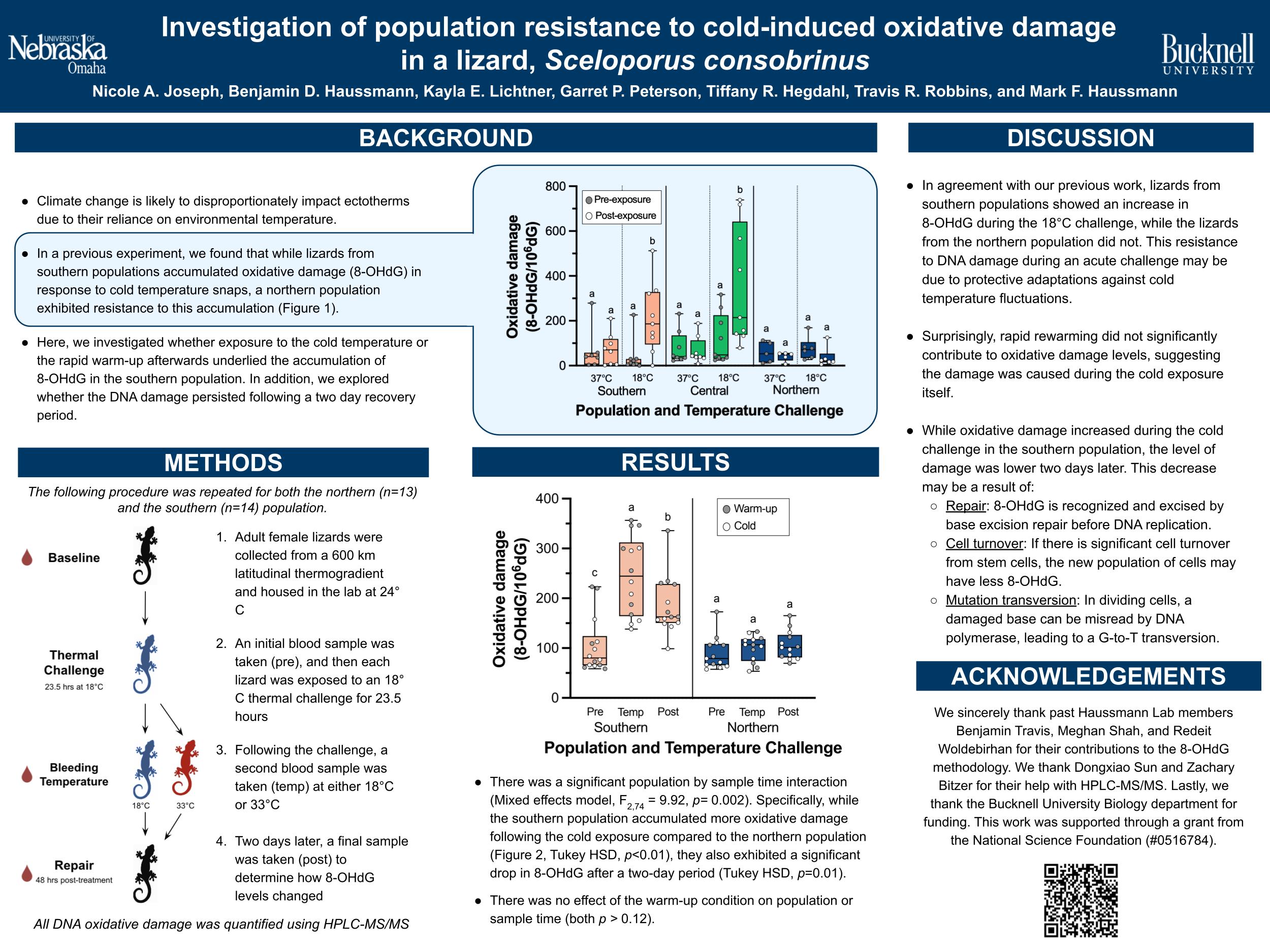
Investigation of population resistance to cold-induced oxidative damage in a lizard, Sceloporus consobrinus
Author:
Nicole Joseph ’25Co-Authors:
Benjamin Haussmann, Kayla Lichtner, Redeit Woldebirhan, Benjamin Travis, Tiffany Hegdahl, Garret Peterson, Travis Robbins, and Mark HaussmannFaculty Mentor(s):
Mark Haussmann, Biology DepartmentFunding Source:
Bucknell Biology DepartmentAbstract
In ectotherms, metabolic rate positively scales with environmental temperature. We previously demonstrated that prairie lizards (Sceloporus consobrinus) exposed to cold temperatures (18°C) showed an expected decrease in metabolic rate in a lab setting. However, these lizards exhibited a statistically significant increase in levels of oxidative damage to DNA, a harmful metabolic byproduct measured as 8-hydroxy-2’-deoxyguanosine (8-OHdG), due to this cold treatment. Interestingly, cold-induced DNA damage differed by population; lizards from the northern-most population, that experience colder annual temperatures, exhibited no increase in 8-OHdG levels. Oxidative damage following cold exposure in southern populations may be due to the cold exposure itself, or to rapid warming up after the exposure. The purpose of this study is to investigate what specifically underlies the cold-induced increase in the 8-OHdG levels. Adult lizards from the northern and southern populations were exposed to a day-long cold temperature challenge (18°C) in the lab. We measured body temperatures for each lizard immediately following the temperature challenge. To determine the effects of rewarming on 8-OHdG levels, we took blood samples from lizards at the 18°C temperature, to act as a control, and lizards that were placed briefly in a warm incubator after the temperature challenge, which served as our experimental treatment group. Finally, we also measured 8-OHdG levels two days after the temperature challenge to examine the DNA damage repair capabilities of each population. As the climate becomes increasingly unpredictable, understanding how ectotherms physiologically respond to temperature changes is essential for predicting their survival and adaptation.